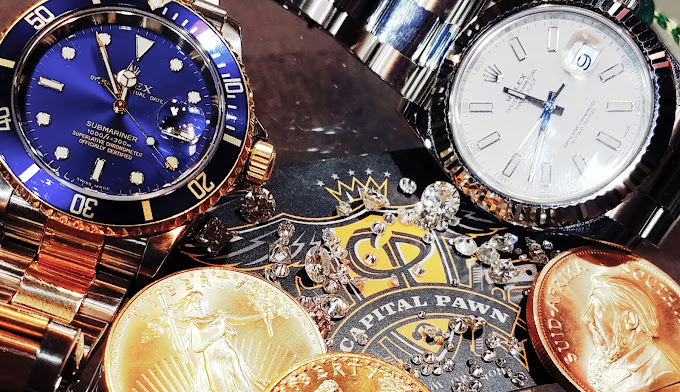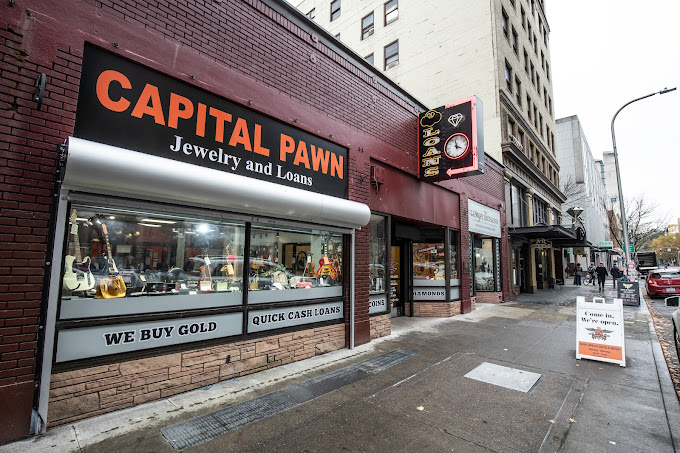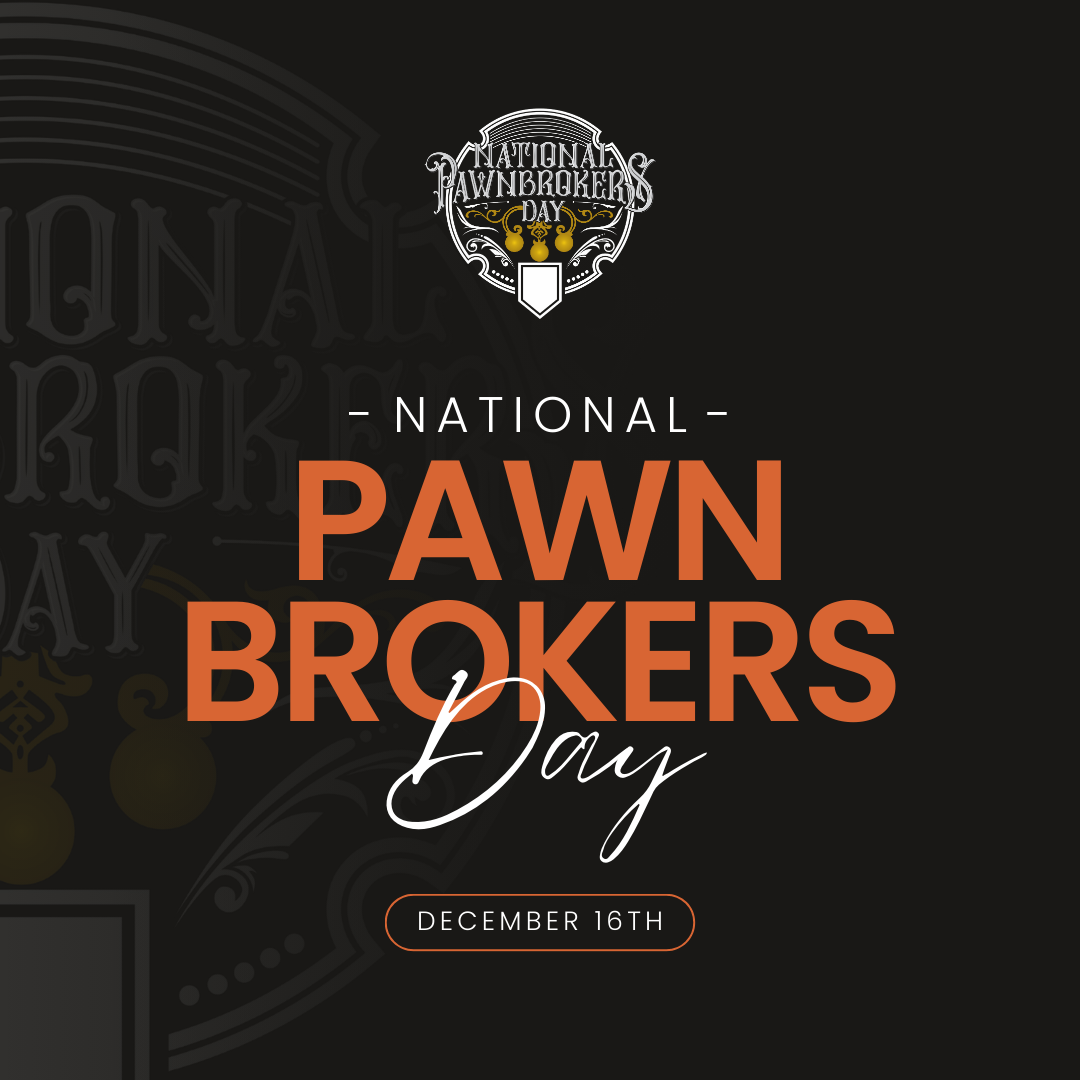National Pawnbrokers’ Day Today!
Christmas is quickly approaching; Capital Pawn can help fill your Christmas List at a fraction of the price!
We’re giving away things all month long!

Happy National Pawnbrokers’ Day!
On National Pawnbrokers’ Day we will give away two Christmas trees FREE to customers here at Capital Pawn. Check us out on Facebook at www.facebook.com/CapPawn for a chance to win a tree. If you don’t win, the trees are being sold at Stayton High School this weekend only from 10am-4pm for only $15 each — your choice of a Noble or Fir! All proceeds of purchases go directly to the fund for the Drug-Free and Alcohol-Free Party for the Stayton High School Graduating Class of 2014. It is an easy way to help graduates stay safe on the night of graduation.
Now a little bit about Gift Day and the history behind National Pawnbrokers’ Day (we have an extended definition here at Cap Pawn, and we will be giving away all sorts of fun stuff all month long!

We started with a leather jacket yesterday (see photo of the happy recipient below).
December 6th is National Pawnbrokers’ Day.
This is also St. Nicholas Day, celebrating the life of the fourth century Christian bishop on whom Santa Claus is based. St. Nicholas is the Patron Saint of school children and of bakers and traditionally, pawnbrokers.
Many great stories have evolved in the history of St. Nicholas. Traditionally, he was born in the ancient Lycian seaport city of Patara, and, when young, he traveled to Palestine and Egypt. He became Bishop of Myra soon after returning to Lycia. Imprisoned during the Roman emperor Diocletian’s persecution of Christians, he was released under the rule of Emperor Constantine the Great and attended the first Council of Nicaea. In the 6th century his shrine was well-known at Myra, from where, in 1087, Italian sailors or merchants brought his body to Bari, Italy; this removal, commemorated on May 9, greatly increased his popularity, and Bari became one of the most crowded pilgrimage centers. His relics are enshrined in the 11th-century Basilica of S. Nicola, Bari.
Saint Nicholas and the Pawnbroker. Through his great acts of kindness and generosity, Saint Nicholas became the patron saint of many; of seafaring men, of marriageable young women, of the falsely accused, of endangered travelers, of farmers, of children (of course), of merchants, and of pawnbrokers. Pawnbrokers and bankers in northern Italy, who would look to Saint Nicholas as their patron saint, would hang three golden balls above the doors of their shops in tribute to, and for good luck from, their Saint Nicholas. (See the story of the three purses of gold below). The Medici family, Italy’s leading pawnbrokers, incorporated this symbol into their family crest.
Legend tells of the pawnbroker who made a loan to a friend with no collateral to secure the debt. The friend however swears on the icon of Saint Nicholas that he will repay the loan from the pawnbroker on a fixed date. When that date comes around, and the debt is due the pawnbroker, his friend refuses to pay the debt, insisting that he owes the pawnbroking nothing. To settle the matter, the borrower and the pawnbroker take their case to court for the judge to decide. The debtor declares under oath that he has given the borrowed money back to the pawnbroker. Technically, the debtor spoke the truth, for unknown to all in the court, he had secretly deposited the exact sum of money owed into a hollow shaft of his walking cane, which he had tricked the pawnbroker into holding while he declared his oath of repayment. With no evidence of guilt, the judge of the court decides in favor of the debtor. This dismayed the pawnbroker who felt betrayed by his patron Saint Nicholas.
Leaving the court, the crooked borrower was making his way home, and after becoming fatigued, was forced by exhaustion to lie down by the side of the road to rest where he fell into a deep, trance-like sleep, from which no passerby could awake him. Unable to wake or move him, a passersby watched in horror as the crooked borrower was run over by a runaway horse and wagon, and he suffered a painful death. The passersby then notice laying on the road, the valuable contents of the debtor’s walking cane that had been broken open by the wheel of the wagon. The passersby called the pawnbroker and the judge to the scene of the accident. The pawnbroker counts the spillage of coins to find that they total the exact amount borrowed from him, but he refuses to take the money while his one-time friend lies lifeless.
The pawnbroker prays that if the power of Saint Nicholas is great enough to take the life of the crooked debtor to expose his fraudulent claim, surely the good and merciful Saint could bring his friend back to life.
Heartened by the good will and generosity of the pawnbroker, Saint Nicholas obeys the prayer, and miraculously, the debtor opens his eyes, stands, and walks to the pawnbroker. He repays all the money he owed.
The story of the debtor and the pawnbroker helped establish the role of Saint Nicholas as the protector of financial integrity and guardian of commitments made in good faith.
Deed of Generosity. Yet another story of St. Nicholas’ goodness, and a strong part of the traditions of Christmas presents comes from the story of the three marriage age daughters and their father. The family was very poor and the father had no dowry to marry them. The father was going to put them out of the house. Nicholas heard of this and then took a purse filled with gold coins and threw it in the father’s window at night. A few days later, the oldest daughter married. Nicholas returned shortly with another purse, threw it in the father’s window and soon the second daughter was married. He returned again with a third purse, but the father was waiting for St. Nicholas. He recognized him, fell to Nicholas’ feet and wept in penitence and gratitude.
The transformation of Nicholas into Father Christmas or Father January occurred first in Germany, then in countries where the Reformed Churches were in the majority, and finally in France, the feast day being celebrated on Christmas or New Year’s Day. Dutch Protestant settlers in New Amsterdam (New York City) replaced Nicholas (Sinter Claes) with the benevolent magician who became known as Santa Claus, thus contributing further to his spreading folklore.”
FATHER CHRISTMAS IS THE PATRON SAINT OF PAWNBROKERS.
Taken from the NPA network and James Allen – Professional Jeweler







